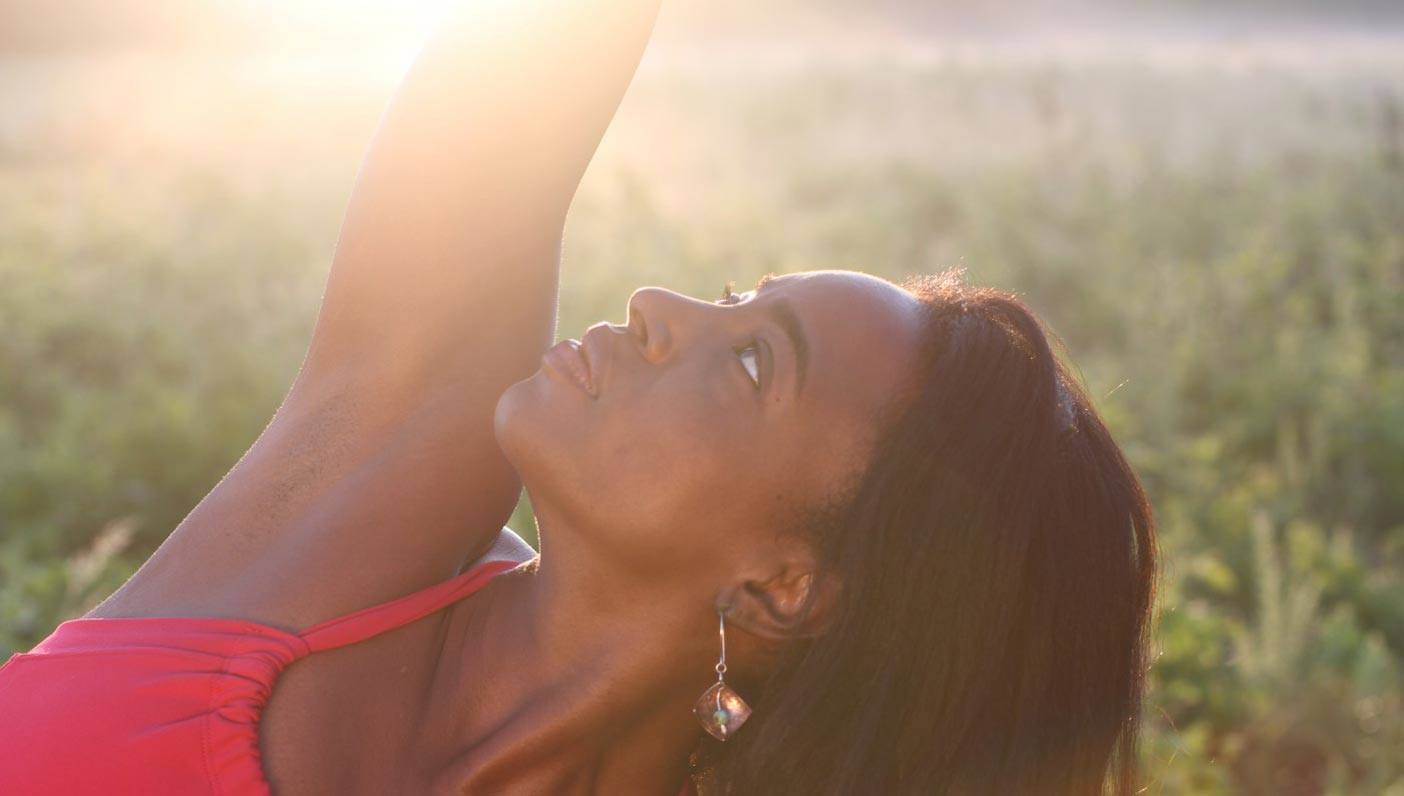
In an effort to connect deeply with herself and the world around her, our favorite recovering people pleaser, Tatum Fjerstad, is embarking on a 3-month journey around the U.S. to teach people to use writing and meditation as a healing process. On the way, she will be sharing stories of triumph, loss, joy, and growth from Actual Humans of Yoga. Or, as we like to call it: #AHOY! Meet Tatum along her journey or email her to share your story.
I met Michelle Johnson in Carrboro, North Carolina, and became instantly fascinated by her empowered, kind presence. Had she not told me, I would have never known that she coming out the other side of battling a deep sense of fear for her own life.
Before I tell you her story, though, I need to say something. The definition and purpose of fear has been greatly misunderstood in the yoga community for some time. With quotes like, “Once you become fearless, you become limitless,” we are sending the message that fear should be shamed and beaten out of us. But that’s just not true. Like anger, fear can be useful and it must be safely expressed when it is felt, or it will become repressed and eventually come out somewhere else in some ugly way.
Similarly, we cannot decide what should and shouldn’t be scary to another person. As Michelle says, “We don’t know what it’s like to move around in another person’s body in the world. We don’t get to generalize other people’s experiences based on what we know about ours.”
So, as you read her story, if you notice yourself debating the legitimacy of her fear, remember: this isn’t about your experience. It’s about hers.
 Michelle is a yoga teacher, social worker and Dismantling Racism trainer. She is passionate about discussing power and privilege and educating communities about what it means to be anti-oppression and anti-racist.
Michelle is a yoga teacher, social worker and Dismantling Racism trainer. She is passionate about discussing power and privilege and educating communities about what it means to be anti-oppression and anti-racist.
Her passion, however, took a hard hit when the media continued to report on the deaths of men and women of color who have been killed by law enforcement. For example: Michelle was undone by Trayvon Martin’s death, but when she heard the news of George Zimmerman’s acquittal, she fell apart.
“I was on the ground, sobbing and could not be consoled. Something in me cracked open that day and I was sure it would never be repaired,” she says. “I thought to myself, ‘We are fucked. The world is going down fast.’”
“We don’t know what it’s like to move around in another person’s body in the world. We don’t get to generalize other people’s experiences based on what we know about ours.”
The once-so-hopeful advocate traded in her newfound hopelessness for depression when Eric Garner, Michael Brown, and Freddie Gray became household names for the worst reasons.
“I started to walk through life thinking, ‘OK, when’s the next brown person getting killed?’ And I am generally not that kind of hopeless person.”
She began to isolate and numb out in ways she had never before considered.
Then, Sandra Bland died.
“That was it,” she says. “I thought, I could be driving in my car and have an interaction with police and I could get killed. That is a possibility. I had never felt that afraid before. I would have an anxiety attack just passing a cop on the freeway. I was basically waiting for someone to harm me.”
Desperation and doubt settled in while her ability to be present quickly faded. She couldn’t show up to protests, serve her clients, or teach her students as she once had. Over time, she realized she needed to do the work of healing herself, and she knew this work will likely be a lifelong process.
By using the breath, which stops when people are experiencing trauma, she has found ways to feel safe and is teaching others how to locate this for themselves. Michelle breathes easiest on her mat or her meditation cushion. The fear is still there and she’s not trying to run from it or numb it. Instead, she’s working with it to become a better teacher, healer and advocate.
“If we have our feet on the ground we’ll know there are things to be afraid of. So we have to acknowledge that fear is there and offer some compassion to it,” she says. “Then, we need to see what kind of relationship we want to have with it.”
—
 Tatum Fjerstad is professional napper who can’t handle that Justin Timberlake loves another woman. When she’s not imagining what her life would be like with JT, she is mostly a human being teaching other human beings how to be okay with being human. She does this through movement, meditation, and writing. Tatum is here to be helpful, honest, and make you laugh, obvi. To learn more about how she does this, follow her on Facebook, Instagram, or Twitter, and at tatumfjerstad.com.
Tatum Fjerstad is professional napper who can’t handle that Justin Timberlake loves another woman. When she’s not imagining what her life would be like with JT, she is mostly a human being teaching other human beings how to be okay with being human. She does this through movement, meditation, and writing. Tatum is here to be helpful, honest, and make you laugh, obvi. To learn more about how she does this, follow her on Facebook, Instagram, or Twitter, and at tatumfjerstad.com.